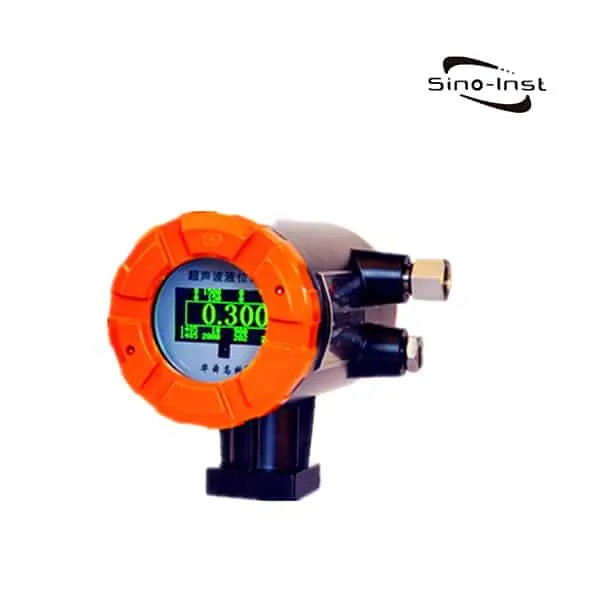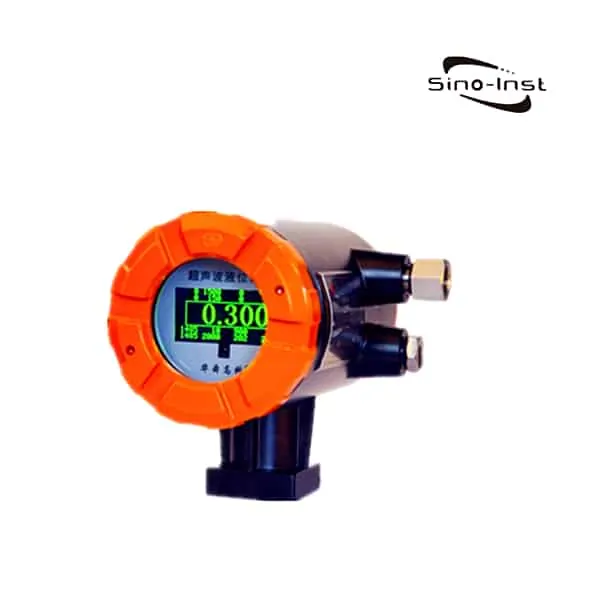Because it is a non-contact level gauge, it possesses a variety of functions that conventional level gauges do not have. These functions include the ability to determine the height of an object without physically touching it. The ultrasonic level gauges that are currently on the market come in a wide variety of quality configurations, and the prices that are associated with these gauges can range anywhere from a few dollars to several hundred dollars. If you are interested in this topic, you need to have a fundamental understanding of the ultrasonic level gauge, including its applications, characteristics, and methods for selecting parameters. If you do not have this understanding, you will not be able to fully appreciate this subject. If you do not have this understanding, then you will not be able to appreciate this topic to its fullest potential. If you do not have this understanding, you will not be able to have a productive conversation about this topic. The term "ultrasonic level gauges" refers to digital level gauges that are controlled by a microprocessor. These gauges are Sino-inst also known as "digital level gauges."The ultrasonic level gauge consists of three parts: the ultrasonic transducer, the processing unit, and the output unit. These three parts make up the ultrasonic level gauge. These three components work together to form the ultrasonic level gauge, which is assembled using the method described above. the amount of time that must pass before a calculation can be made to determine how far away from the surface of the liquid being measured the sensor is located. This time must pass before the calculation can be made.
The following stage is when you will be presented with the opportunity to submit an application. Manholes, factory water tanks, tanks, municipal engineering, tap water, sewage treatment, water conservation and hydropower, steel, coal mines, electric power, petrochemicals, urban inland rivers and lakes, and food processing industries are examples of common application conditions. Additionally, this material is frequently utilized in the production of steel, electrical power, and petrochemicals, which are three distinct industries. The use of ultrasonic level gauges confers a variety of advantages upon their operators, some of which are described in more detail in the following paragraphs:
1. Temperature compensation, gain control, and power regulation are automatically carried out.4. The output of the split ultrasonic liquid level probe comes equipped with robust interference protection as a standard feature.5. If the user so chooses, the values of the upper and lower limit nodes, as well as the online output adjustment, can all be set arbitrarily.
When it comes to the hierarchy of priorities, "selection" and "parameters" are at the very bottom of the list. In theory, the accuracy can be broken down into two levels: 0.5% and 1%; however, in practice, due to the various conditions of the field, the accuracy is frequently worse. In theory, the accuracy can be broken down into two levels: 0.5% and 1%. In principle, the degree of accuracy can be divided into two categories: 0.5% and 1%. In general, the degree of accuracy can be broken down into two distinct buckets: 0.5 percent and 1 percent. The relay output can be either AC250V/5A or DC30V/5A, and the analog output can be separated into 2-wire 4-20ma output and 4-wire 4-20ma output. Both of these options are available. Both of these choices are open to consideration. Both of these possibilities ultrasonic level sensors are up for debate and discussion. The very last thing that needs to be done is installation, and within this process, it is possible to further subdivide into two distinct categories: the installation of flanges and the installation of threads. Installation is the very last thing that needs to be done. The very last thing that needs to be done is the installation of whatever it is.
The ultrasonic transducer, the processing unit, and the output unit are the three primary components that make up the ultrasonic level gauge in the vast majority of cases. These three components are assembled into one cohesive unit to form the ultrasonic level gauge. the amount of time that must pass before a calculation can be made to determine how far away from the surface of the liquid being measured the sensor is located. This time must pass before the calculation can be made. This is due to the fact that ultrasonic level gauges offer a variety of benefits that are not available in any other type of level gauge. These benefits cannot be found in any other type of level gauge. These advantages are not available in any other model or variety of level gauge.
Because there are currently many manufacturers of ultrasonic level gauges in my country, and the products are classified into a variety of categories, it is a problem that each manufacturer in my country is concerned about how to choose an appropriate ultrasonic level gauge. This is because there are currently many manufacturers of ultrasonic level gauges in my country. This is because there are many different categories that can be applied to the products that are being offered for sale. The editors who are listed below have categorized the various options that are available so that you can choose the one that corresponds to your requirements and preferences the most closely from the available choices. You need to have a solid understanding of the following working conditions before you are able to choose an ultrasonic level gauge:
1. The medium that will be measured, which could be anything from water to oil to mud or anything else. This medium will also be measured. This medium is going to undergo measurement. What is the measurement range that must be taken into account in order to ensure that the necessary measurements are taken accurately? Perform temperature checks at the location, and be sure to make a note of your findings after each one. 4. As a result of gaining an understanding of the operating conditions that were presented earlier in the sentence, we now have some recommendations regarding the procedure of choosing products. These recommendations were developed as a result of gaining this understanding. The emission angle is one of these points, and it describes the inclination of the transducer with respect to the direction in which ultrasonic pulses are emitted. Another one of these points is known as the incidence angle. The frequency of the ultrasonic pulses that are being emitted is another one of these aspects that should be considered. It is important to ensure that there are no obstructions in the region where the microwave beam is being radiated. The lower edge of the transducer should be able to make direct contact with the surface of the medium that is being measured. In the event high temperature pressure transducers that there are any impediments, the microwave beam will not be able to carry out an accurate measurement of the medium. This is because the microwave beam is incapable of penetrating any obstacles, which explains why this result occurred. Because of this, it is extremely important to maintain the greatest amount of distance possible between oneself and the facilities that are housed within the tank while the process of installation is being carried out. It is acceptable to engage in false echo learning when doing so is necessary, such as in the situations described above.
4. As a result of gaining an understanding of the operating conditions that were presented earlier in the sentence, we now have some recommendations regarding the procedure of choosing products. These recommendations were developed as a result of gaining this understanding. The emission angle is one of these points, and it describes the inclination of the transducer with respect to the direction in which ultrasonic pulses are emitted. Another one of these points is known as the incidence angle. The frequency of the ultrasonic pulses that are being emitted is another one of these aspects that should be considered. It is important to ensure that there are no obstructions in the region where the microwave beam is being radiated. The lower edge of the transducer should be able to make direct contact with the surface of the medium that is being measured. In the event high temperature pressure transducers that there are any impediments, the microwave beam will not be able to carry out an accurate measurement of the medium. This is because the microwave beam is incapable of penetrating any obstacles, which explains why this result occurred. Because of this, it is extremely important to maintain the greatest amount of distance possible between oneself and the facilities that are housed within the tank while the process of installation is being carried out. It is acceptable to engage in false echo learning when doing so is necessary, such as in the situations described above.
Additionally, extreme caution needs to be exercised at all times so as to prevent the ultrasonic beam from coming into any kind of contact with the feed stream. This is something that needs to be done in order to avoid any kind of negative consequences. It is imperative that this task be completed in its entirety in order to forestall the occurrence of any unfavorable outcomes. It is required that instruments comply with national installation regulations for explosion-proof hazardous areas in order for them to be installed in locations that are explosion-proof. These regulations govern how equipment can be installed in areas that could pose a risk to people's health and safety. The casing of the instrument that is resistant to explosions is made out of die-cast aluminum, which is an aluminum alloy that can withstand high temperatures. This material is used to make the casing of the instrument. However, in order for the installation to be legal, the instrument must have a connection to the ground in order for it to be permissible to install it in conditions that call for explosion-proof requirements. Installing an instrument that is explosion-proof in conditions that call for explosion-proof requirements is allowed.








